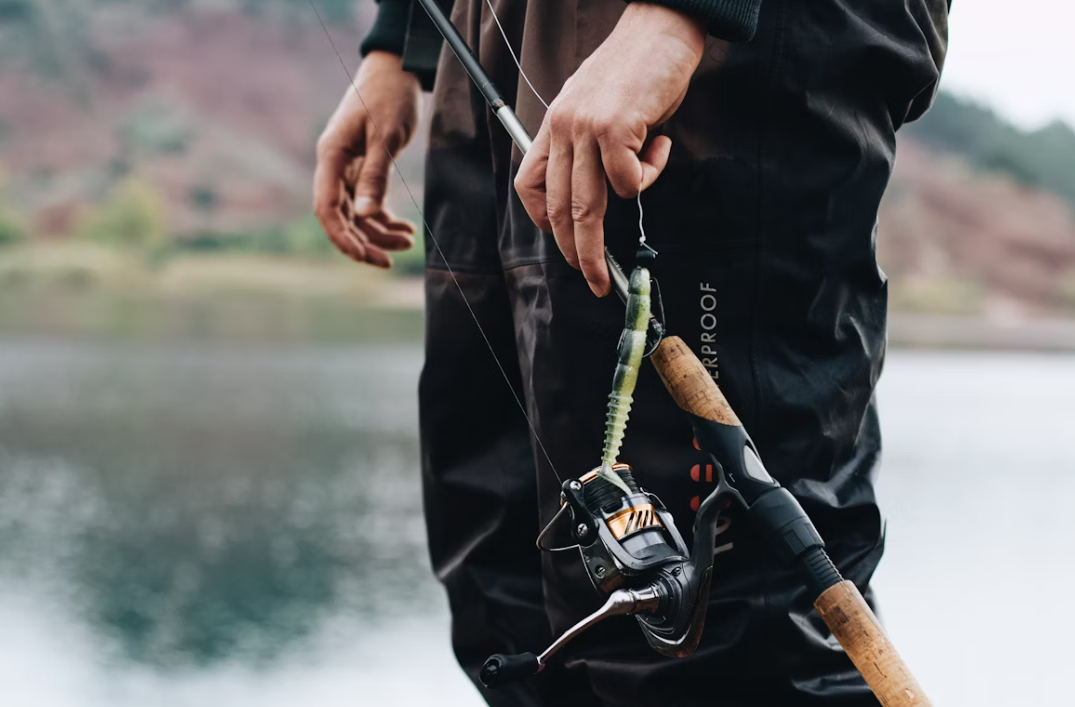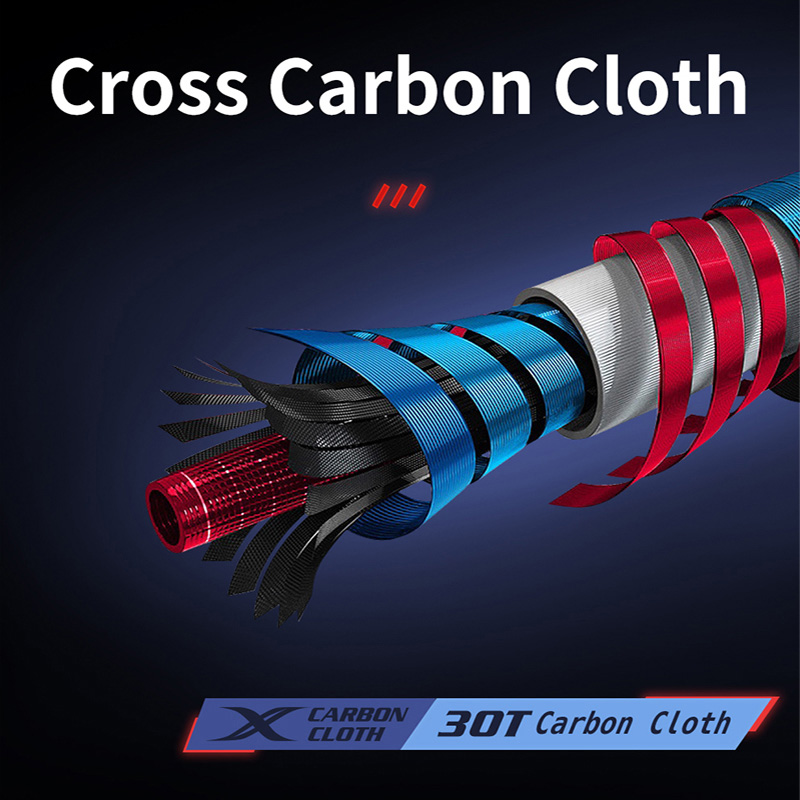Fishing isn’t just about putting a line in the water. For those who sell or use fishing gear, two small words—action and power—can change everything. They affect how the rod casts, how it sets the hook, and how it plays a fish. Yet, many new buyers or even some retailers confuse them, ordering gear that doesn’t match the market’s real needs. One of the suppliers that works with a wide range of rod designs is Laike. With over 10 years in the fishing tackle business, they produce and ship rods, reels, and accessories to more than 100 countries. Every rod design is tested in real conditions—lakes, rivers, even harsh saltwater spots—before it’s shipped in bulk. That means when a buyer picks a model from their catalog, it’s not a gamble; it’s proven gear.

What Does “Rod Action” Really Mean?
Rod action describes how much of the rod bends when pressure is applied and where that bend happens. It’s not a marketing term; it changes how a rod behaves in the hands of an angler.
Fast Action for Quick Hook Sets
Fast action rods bend mostly at the tip. This design lets anglers feel even light bites quickly. It’s ideal for single-hook lures like jigs or worms. Wholesalers often stock these for bass markets, where quick reaction matters.
Medium Action for Versatility
Medium action rods bend further down the blank, offering a balance between sensitivity and flexibility. They’re perfect for treble-hook lures or when fishing a mix of species. These are common in export orders going to regions with varied fishing environments.
Slow Action for Delicate Presentation
Slow action rods bend deep into the blank, almost to the handle. They shine in situations where gentle lure movement is needed, like for small trout or panfish. Schools and youth fishing programs often order these because they make it harder to rip hooks out of small fish.
Between each of these, there are in-between actions—medium-fast, for example—that give a blend of benefits. It’s not just about the bend; it’s about the purpose.
How Is Rod Power Different from Action?
Rod power is about the backbone—the strength needed to bend the rod. While action changes how the rod feels and moves, power decides the weight of fish and lure it can handle.
Ultralight and Light Power for Small Game
Ultralight rods are made for tiny lures and small fish. Light power rods can handle a bit more, such as perch or crappie. They’re easy to carry and fun to use, but sending them to a tuna market would be asking for returns.
Medium Power for General Use
Medium power rods cover a wide range of fishing situations. They can throw spinnerbaits, soft plastics, or small crankbaits. Many retailers keep them as “safe stock” because they appeal to casual anglers.
Heavy and Extra Heavy for Big Fish
When the target is catfish, musky, or saltwater species like tarpon, heavy rods are the right call. Extra heavy models are almost overkill for anything under 20 pounds but essential for heavy lures or strong currents.
Matching power to the right market means fewer broken rods and happier repeat customers.
How Do Action and Power Work Together?
A rod with fast action and heavy power is very different from one with slow action and light power. This combination decides how the rod will perform in casting, hook setting, and fighting fish.
The Casting Difference
Fast action rods load less of the blank, meaning the cast is quick and accurate. Slow action rods load deeper, which can fling lighter baits further but with less pinpoint accuracy.
Hook Setting Strength
Pairing a fast action with heavy power gives solid hook sets, even in thick weeds. This setup is common in bass fishing markets.
Fighting the Fish
Light power with slow action makes for fun fights on small fish, while heavy power with fast action is more like dragging the fish in—a style that works for commercial or tournament settings.
How Does Material Choice Impact Action and Power?
Even if the design is perfect on paper, the wrong material can ruin performance.
Carbon Fiber for Light Weight and Sensitivity
Carbon telescopic fishing rods can keep weight low without losing strength. This means anglers can fish longer without fatigue. Some models of Laike have extra reinforcement at the joints to stop breaks under heavy load—important for European markets targeting both fresh and saltwater species.

Fiberglass for Durability
Fiberglass rods are tougher and can handle rough handling. They’re heavier, which makes them less ideal for all-day casting, but perfect for rentals or teaching programs.
Composite Blends for Balance
Blending carbon and fiberglass produces rods that are flexible, strong, and affordable. Many wholesalers choose composites to cover multiple price points with fewer SKUs.
When Should a Buyer Choose One Combination Over Another?
It’s not just about technical specs; it’s about matching the gear to the end-user and the fishing environment.
Matching to Fishing Style
Small ponds and slow rivers? Light power and slow action work well. Offshore trolling? Heavy power and fast action are needed.
Considering Skill Level
Beginners benefit from rods that are forgiving, like medium action and light to medium power. Experienced anglers often demand more specialized gear.
Looking at Market Trends
Some markets have seasonal preferences—ice fishing in winter, surf rods in summer. Stocking accordingly prevents leftover inventory.
Tips for Wholesalers Planning Rod Inventory
A smart mix of action and power in stock can improve sales without overloading warehouse space.
Stocking Versatile Models
Keeping medium power and medium-fast action rods can cover most fishing needs. These are safe bets for many markets.
Offering OEM/ODM Customization
Laike’s customization options—handle material, color wraps, guide type—can make products stand out without a complete redesign.
Balancing Price Points
Mixing entry-level fiberglass rods with premium carbon fiber models ensures there’s something for every buyer.
Rod action and power aren’t just buzzwords; they’re the backbone of a good fishing experience. For sellers, knowing the difference helps in stocking products that match market demand. For anglers, it’s the difference between a missed strike and a trophy catch. When both factors are right, the result is better performance, happier customers, and stronger repeat business.
FAQ
Q1: Which action is best for beginners?
A: Medium action, as it’s forgiving and versatile.
Q2: Are composite rods worth stocking?
A: Yes, they balance cost, strength, and flexibility, making them a good all-round choice.
Q3: Can rod action affect casting distance?
A: Yes, slower actions can cast lighter baits farther, while faster actions give better accuracy.




